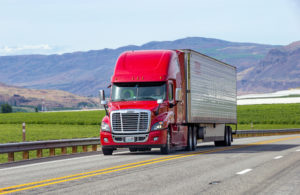
Data Shows Commercial Driving Returning to Normal — but It Varies by Industry

As the U.S. swiftly returns to normal – for now – industry analysts are carefully scrutinizing the economy for signs of recovery. Commercial transportation activity (which includes subsectors like construction transportation, food and beverage transportation, and wholesale trade transportation) is one of those indicators, with much of the industry having slowed or stalled in the wake of widespread COVID-19 shutdowns. Now, industrial IoT company Samsara has used big data to examine how the country’s reopenings have been reflected in the commercial transportation industry.
To conduct its analysis of commercial transportation during the pandemic, Samsara used data from its 15,000 customers. Cumulatively, the study analyzed information from nearly 130 million trips, encompassing miles driven, vehicle activity, and safety event data, all aggregated at a weekly level. With that data in hand, Samsara came to four key conclusions about recent changes in commercial transportation.
First, Samsara found that commercial driving activity has returned to normal – or even higher than normal – levels. Samsara defines this as miles driven and the number of operating vehicles on the road, and by those metrics, the company says that states have (on average) returned to around 95% of pre-COVID-19 commercial driving activity. There is, of course, variation: states that had looser lockdowns experienced smaller drops in activity and have now rebounded to more than 100% of previous activity.
Second, Samsara identified wide variation in industry impacts. Long haul transportation, Samsara says, recovered very quickly, since it supported the transportation of essential products like medical supplies and groceries. Similarly, food and beverage transportation recovered quickly as people began to feel safe ordering food again. Other industries weren’t as lucky: both passenger transit and education transportation have experienced predictable sustained decreases in activity, while oil and gas transportation also remains operating at 60% of pre-COVID-19 activity.
Apart from sheer quantity of activity, behavior has also changed. Samsara found a large decrease in harsh braking and acceleration. With emptier roads, drivers exhibited far safer behavior per mile driven than they did pre-pandemic, showing an average 40% decrease in harsh braking and acceleration. Samsara says the trend is becoming even clearer as commercial vehicles return to the road but passenger vehicles remain relatively sparse. In keeping with that, states with harsher lockdowns also exhibit stronger decreases in these behaviors.
On the other hand, Samsara saw a strong increase in severe speeding. Once again, emptier roads are the culprit, with happily unimpeded drivers producing a 20% increase in speeding more than 11 miles per hour over the speed limit. In large cities where roads are typically congested, this trend was particularly pronounced, showing a 40% jump in speeding. By May, however, speeding increases began to diminish as more vehicles took to the road.
To read more about Samsara’s study and conclusions, visit their blog post here.





























